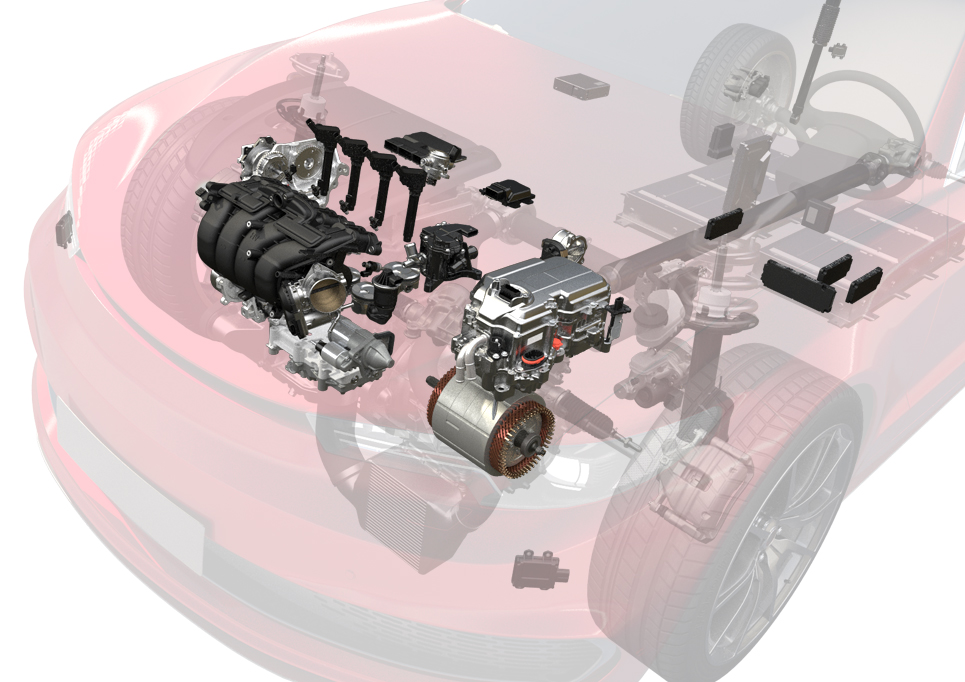
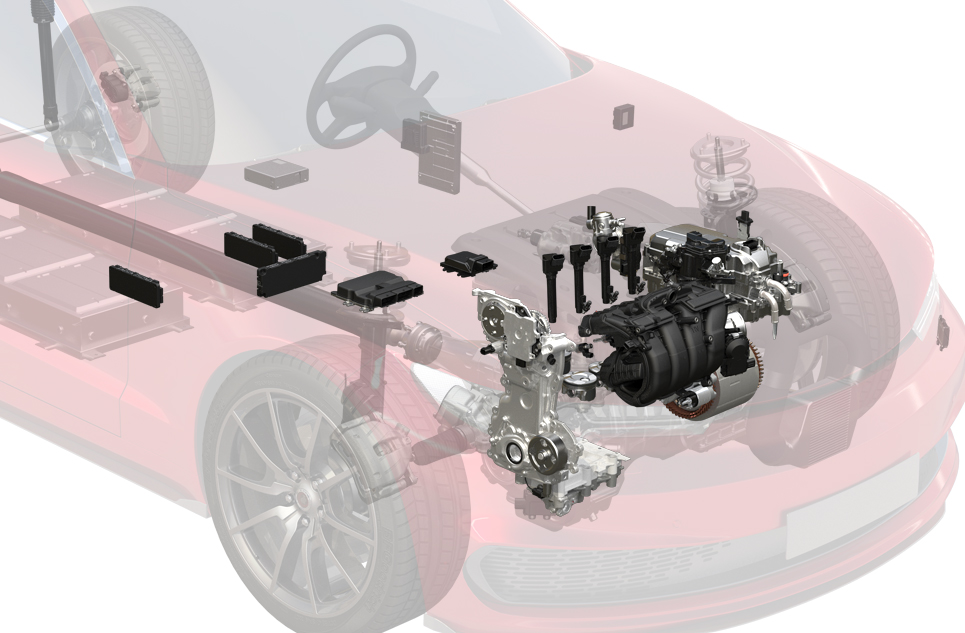
We create clean engine management systems with improved thermal efficiencies that reduce environmental impact, and electric powertrain systems with high environmental sustainability and driving performance.
We contribute to superior environmental performance with our compact, lightweight and highly efficient motors for electric vehicles, inverters with top-of-class output density and electronic control systems that precisely detect residual battery power for electric and hybrid vehicles optimizing control.
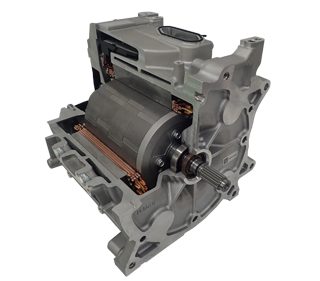
This is a high-efficiency motor for electric vehicles, including hybrid vehicles, which are indispensable for promoting environmental protection.
High torque density and high efficiency through the use of square wire electric technology, and unique low-noise technology have resulted in a motor with excellent environmental performance.
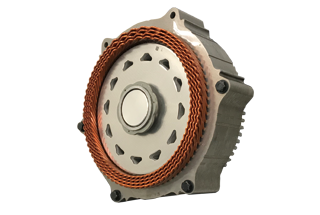
It is one of the key components in the electric powertrain, which is essential to meet environmental regulations for hybrid and electric vehicles, etc. We have achieved a compact, high-efficiency motor by suppressing coil height using our unique flat wire forming technology.
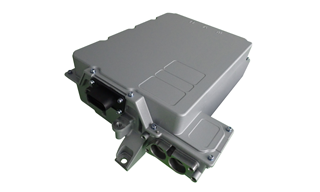
One of the main components in the electric powertrain, the inverter is essential for compliance with environmental regulations for hybrid and electric vehicles, and consists of power modules with built-in power semiconductors, control boards, capacitors, current sensors, etc. It converts the energy stored in the battery into AC power to drive the motor.
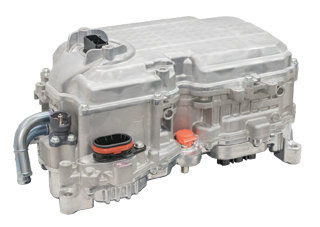
The inverter controls power-generation and drive motors in hybrid vehicles and electric vehicles during ignition, acceleration, and deceleration. The inverter is equipped with a high-performance intelligent power module that includes multiple drive circuits and voltage detector features, as well as a current sensor and control board inside the module that were previously independent from the unit. The inverter is also equipped with an RC-IGBT that combines the IGBT silicon power semiconductor switch with a reflux diode that provides protection as a single unit. In addition, the VCU has been downsized and a DC-DC converter has been incorporated to achieve high functionality and a compact size.
VCU : Voltage Contorol Unit
RC-IGBT : Reverce Conducting-Insulated Gate Bipolar Transistor
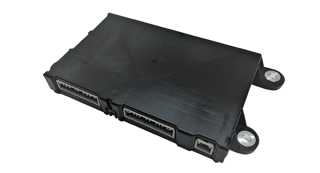
The battery management system detects remaining battery capacity in electric or hybrid vehicles with a high degree of accuracy, performing a variety of battery-related monitoring and control functions such as charge and discharge control, cell balance control, high-voltage line connection control, and cooling control. The single-body resin construction with built-in cell voltage sensor functionality is designed to improve cell voltage detection accuracy, offering more flexibility in mounting angle options for the battery-monitoring IC. This in turn increases battery charge capacity. The highly reliable design conforms to functional safety standard ISO26262 ASIL-D and prevents cell overcharging.
We are improving components and control technologies that optimize combustion, air intake, lubrication and thermal management to contribute to the realization of fuel-efficient and clean powertrains.
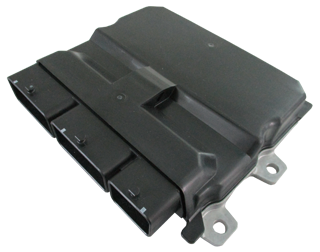
The unit controls direct injection gasoline engines by detecting acceleration and other changes by the driver and maintains the engine operating at optimal performance. In addition, our software meets a broad range of direct injection drive and fuel high pressure pump current waveform requirements and adheres to increasingly stringent emission regulations.
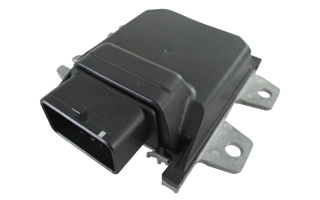
This is an electronic control unit to control the gear shift of the CVT (Continuously Variable Transmissions). Coordinating with the driver's use of the accelerator and gear position, the unit sends commands to the hydraulic circuit to shift the CVT, thereby optimizing the gear shift and providing the driver with a comfortable driving experience.
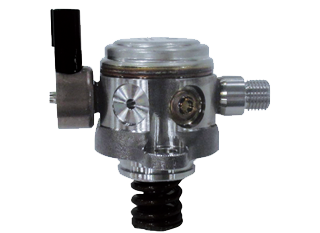
The pump supplies high pressured (up to 35 MPa) compressed fuel to the injector in accordance with demands of the electronic control unit. A flow control solenoid valve with a unique structure is used to achieve both industry-leading quietness and a large flow rate (1.4 cc/rev). In addition, we have achieved the smallest height in the industry (47mm from flange to apex) through a unique internal configuration, resulting in a superior design for mounting.
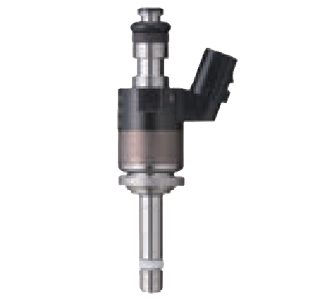
The injector injects fuel sent from the fuel pump directly into the cylinders at high pressures based on ECU commands. World-class features include ultra-refined fuel mist with a smaller particle size, operable fuel pressure, and highly responsive operations. We have achieved these global-leading performance characteristics through the use of our original mechanisms and manufacturing methods, performance tuning, and strict quality assurance. We employ a valve-opening mechanism utilizing the hammering of a separate magnetic valve resulting in a valve that is highly responsive to instructions from the ECU and capable of flow variations compatible with engines of various sizes.
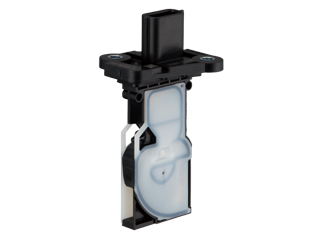
Air Flow Sensor is installed to control the fuel injection system, and measures air intake to the engine. It transmits information on the amount of air passing through the intake pipe to the engine control unit (ECU) according to the engine's operating conditions, and optimizes the amount of fuel injection to contribute to improved fuel economy and reduced CO2 emissions.
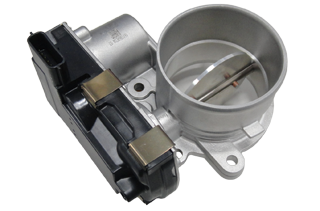
As part of the engine management system the Intake Pressure Control Valve manages the intake pressure in order to deliver stable performance and improve efficiency, even when exhaust pressure is low. We use a small motor to help reduce the size and weight (570g @ bore diameter Φ60) of the valve. Our sensors provide improved accuracy to ensure optimal performance can be obtained throughout the operating cycle to ensure the cleanest and most efficient system.
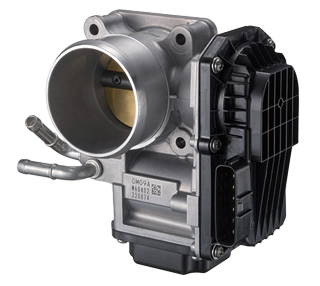
This throttle body uses electronic control to supply air to the engine.A sensor detects how far the throttle is open and then sends that information to the ECU.The ECU decides to open the throttle valve in line with the throttle opening and sends the instructions to the motor.
A high precision throttle adjustment sensor and a highly-responsive and compact motor for engine output control are installed for better fuel efficiency and greater ride comfort.
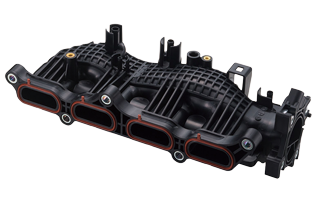
The intake manifold is a branched pipe that takes in air and delivers it to each engine cylinder.Flow is optimized so that an equal allocation of fresh air mixes thoroughly with fuel for increased output and better fuel efficiency.
Smooth airflow is the most essential function that an intake manifold performs. We run simulations that visually represent the fluid dynamics of the unit to decide its final shape.
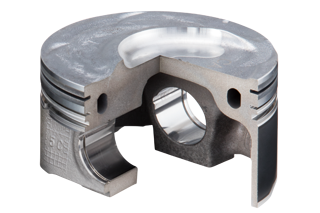
The piston is an indispensable part of the engine that converts the reciprocating motion of combustion pressure into rotational energy for the crankshaft. Cooling channel pistons use a special casting method to create an annular cavity that allows engine oil to pass, thereby preventing excessive temperature rise of the piston during engine operation and increasing combustion efficiency.
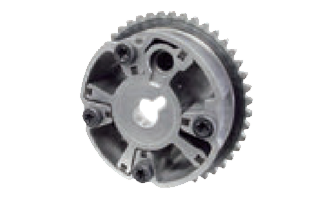
The engine valve timing is controlled by the VTC. Engine oil controlled by the VTC solenoid is supplied to the inside of the product in response to a signal from the electronic control unit which controls the valve phase. The valve timing is kept in the optimum phase ensure optimal engine operation.
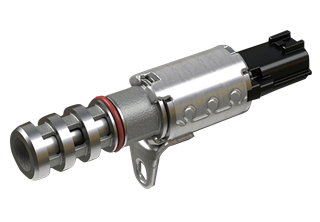
This solenoid-integrated switching valve controls the hydraulic pressure of the VTC actuator, which optimizes valve timing to improve power output and fuel efficiency from low to high rpms. Linear solenoid enables continuous optimization of the amount of valve overlap.
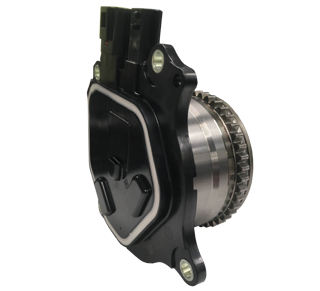
Electromotive VTC controls valve the timing of the engine. The built-in motor operates according to the electrical signals from the electronic control unit, and the phase of the camshaft is varied through the reduction gear to keep the engine in optimum operating condition, thereby improving fuel efficiency and reducing exhaust gas. The VTC is characterized by its wide range of operating conditions and variable phase angles compared to VTCs operated by hydraulic pressure.
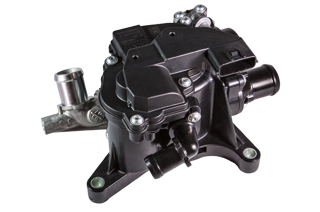
This control valve switches the flow path of engine cooling water to control the temperature of the engine and auxiliary equipment. By controlling the flow of the cooling water, the engine can be warmed up quickly, hot water can be optimized, and the flow rate to the radiator can be adjusted to keep the engine at the optimum temperature, thereby improving fuel efficiency by reducing engine friction and early operation of the heater to improve comfort.
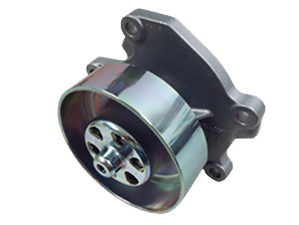
Water pump circulates the optimal amount of coolant to keep the engine at its optimal temperature.
Our deep experience in design and manufacturing is key to the high reliability required by our customers.
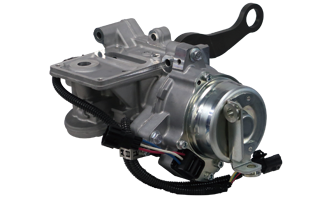
VCR is a system that changes the compression ratio of the engine according to the driving conditions. This actuator is compact and highly responsive to change and maintains the compression ratio. The system achieves high fuel efficiency and excellent driving performance in a wide range of driving situations.
VCR: Variable Compression Ratio
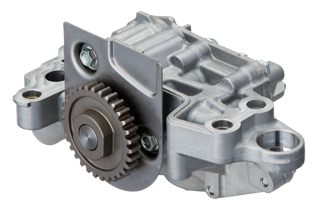
The variable displacement vane pump supplies the oil for engine lubrication and cooling to various parts of the engine. Hitachi Astemo’s unique VDOP system enables oil pressure control independent of oil temperature and maximizes reduction of friction and emission by preventing unnecessary oil jet injection at low oil temperatures.
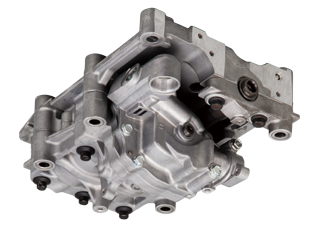
This weighted balance shaft reduces engine vibration and improves vehicle comfort. CAE (Computer-aided Engineering) is used to optimize the assembly design, including the housing that holds the shaft and the bearings, for light weight, strength, and reliability. The balancer and oil pump (variable displacement type) can be designed as an integrated unit to further improve engine adaptability.
VDVP: Variable Displacement Vane Pump
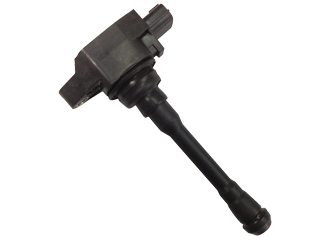
The plug top coil is a component of the independent ignition system that boosts the battery to a voltage that can ignite the fuel mixture. With increasing demand for environmental performance in automobiles today, the plug top coil provides enhanced ignition energy, while at the same time saves space through the development of optimized magnetic circuits and other measures, leading to improved fuel efficiency and reduced size and weight by achieving both high output and compactness.
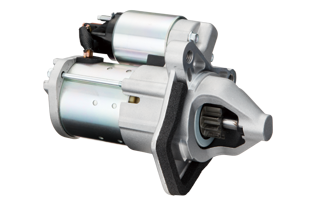
The starter uses a DC motor, mainly powered by an on-board battery to drive a stationary engine and create an intake and compression process at a speed sufficient for combustion in the cylinder.